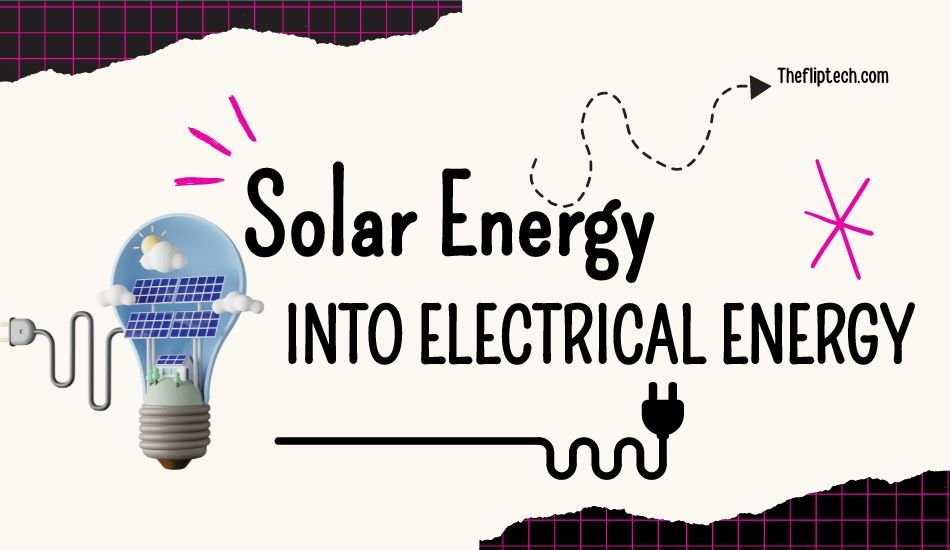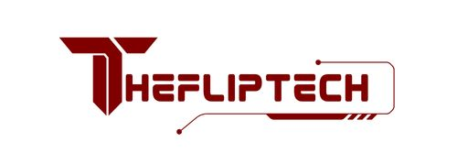How to Convert Solar Energy into Electrical Energy
One of the most abundant and renewable sources of energy on our planet is solar energy. Sunlight contains two forms of energy, light and heat, which can be converted into electrical energy using various technologies. Converting sunlight into electricity involves several steps and approaches, in this article we will learn how to convert solar energy into electrical energy.

Solar Panels: The Key Component
Photovoltaic Cells
The photovoltaic cell (PV) is the technology mostly used for changing solar energy into electricity. PV cells are created from silicon and other semiconductor materials which can absorb sunlight thereby producing an electric current. On being struck by sunlight, electrons found in these PV cells get excited leading to consequent flow thus producing an electrical current. This is what we refer to as photovoltaic effect.
Types of Solar Panels
Different sorts of solar panels exist, each one having its benefits and drawbacks:
- Monocrystalline Panels: They constitute an incredibly effective kind of solar panel, hence they are relatively durable. However, they happen to be a bit costly since they are made from a sole crystal structure as well as being perfect for spaces with limited room.
- Polycrystalline Panels: These are less efficient when compared with the monocrystalline panels because they have more crystals, which are cheap and can cover big areas.
- Thin-Film Panels: These are formed by drying a very thin layer of substances that conduct electricity onto other materials. Though not as high performing as crystalline ones, they are bendable and not heavy.
Efficiency Factors
Various factors can influence the effectiveness of solar panels :
- Intensity of sunlight: The more sunlight hits them directly, the more their efficiency is affected because intense light generates more electricity.
- Temperature: Hotter temperatures can lower PV cells efficiency with panels meant for operation within specific temperature ranges.
- Angle and Orientation: How they are positioned relative to the sun has a bearing on energy generation capacity Solar panel’s efficiency could depend on the angle it is tilted and the direction in which it faces
- Shading: Partial shade from trees buildings or debris would greatly decrease the efficiency of solar panels, even though these require regular maintenance and appropriate site selection.
Inverters: Converting DC to AC
Solar panels convert direct current (DC) electricity to alternating current (AC) electricity to be used in homes and businesses. This conversion process is where an inverter comes in. Among the inverters available, we have three main types:
- String Inverters: These inverters convert DC from the entire string of solar panels into AC Electricity. They are considered cost-effective, though if one of the panels in the system is shaded or not working properly, it results in reduced efficiency.
- Microinverters: Each solar panel has its own microinverter which converts DC to AC at panel level. This ensures that high efficiency is maintained, regardless of how some of these panels may perform badly or get caught up in shadows.
- Power Optimizers: These devices are usually mounted on individual panels, and hence they optimize the DC electricity before it is allowed into a central inverter. String inverters as well as micro inverters can be said to have been combined by them as they offer high efficiency with flexibility.
Mounting Systems: Ensuring Optimal Sun Exposure

Optimal sun exposure enhances the efficiency of solar installations, since the position and slope of the solar panels influence their total output. The efficiency and longevity of solar panels depend on the correct placement and direction in relation to sunlight. Can you suggest some mounting tactics?
- Roof-Mounted Systems: Involving fixing of solar panels on top structures, they save space. In urban setups where land is expensive, this is very convenient.
- Ground-Mounted Systems: These are installed on the ground, making them ideal for larger installations and easy maintenance. They can be seen in solar farms that produce energy for the entire city.
- Tracking Systems: Tracking devices help to move them from side to side and up and down as the sun changes its position during the day in order for them to produce more electricity. Tracker can be single-axis trackers which rotate on just one plane or dual-axis trackers that have two pivot points and therefore are more efficient but less common than single axis designs, which increase complexity, cost, or maintenance issues.
Fixed vs. Adjustable Mounts
- Fixed Mounts: Fixed mounts are static in nature and hold panels at a fixed angle and are cost-effective. But do not account for seasonal changes in terms direction.
- Adjustable mounts: These mounts can be adjusted manually to improve sunlight collection during different seasons, thereby optimizing it all year round.
Energy Storage: Storing Excess Solar Energy
In order to provide uninterrupted power supply during periods of low or no sunlight, energy storage systems are utilized for excess solar energy storage. Battery technology is the most common method of energy storage in use today. In solar energy systems, different types of batteries are used as follows:
- The lead-acid battery: They are the most commonly used and the oldest, hence cheap and reliable. However, compared to newer technologies, these have a shorter life span and their energy density is lower.
- Lithium-ion batteries: They have high energy densities negative electrodes comprising lithium ions long life cycles due to the tight packing that exists between the particles making up the electrodes. For modern solar energy systems, they perform better but cost more, although they are preferred than any other type.
- Flow batteries: Liquid electrolytes house these batteries, which power cells with long life cycles as well as options to scale them up. Consequently, they are utilized in large-scale energy storage, but the fact that they are expensive coupled with their demanding operations makes them suboptimal.
Battery Management Systems
A battery management system is of paramount importance when it comes to monitoring and controlling the performance of a battery, as it supervises over safety. Improves efficiency and extends the lifespan of a battery by regulating charge/discharge cycles temperature as well as state of health.
Grid-Tied vs. Off-Grid Systems
Solar energy systems can either be connected to the electrical grid (grid-tied) or work independently (off-grid). There are benefits and purposes for each system:
- Grid-Tied Systems: They connect to the local utility grid, enabling excess electricity to be sold back to the grid (net metering) and ensuring a dependable power supply. They are best suited for residential and commercial installations.
- Off-Grid Systems: These are completely off the grid and totally depend on solar energy plus energy storage. They can be used in remote areas with no grid or where it is not feasible to have one.
Hybrid Systems
Hybrid solar systems harness both the advantages offered by grid-tied and off-grid systems by being grid connected and having an integrated battery bank. This creates a setup that is flexible enough for utilizing battery-stored sun power as a backup power source. Hence, it does not lose the advantages associated with being grid-compliant.
Installation and Maintenance

For optimal functioning and long life of your photovoltaic system, it must be installed and maintained properly. The following are some steps involved in installing it:
- Site Evaluation: This involves evaluating where your solar panels should be placed, depending on how much sun it receives during different times of the day or months throughout the year. As
well as other factors like shading and structure suitability of the existing space. - System Design: This is when one chooses layout designs for proposed installation; selection of parts; designing thereof electrically.
- Permitting and Approvals: You must collect all necessary permissions from local authorities as well as electric utilities.
- Installation: Fixing of cells, setting up of inverters & batteries as well as interconnection into central grid or load.
- Commissioning: The system is put through tests that will ascertain if it works correctly within permissible limits set by authorities.
- Regular Maintenance: Regular panel cleaning, shading and debris check, electrical connections inspecting and system performance monitoring are part of regular maintenance. For maximum efficiency and longevity of the system, proper maintenance is important.
Economic and Environmental Benefits
Turning solar energy into electrical power has a lot of economic and environmental advantages:
- Cost savings: Solar energy could make a heavy cut on your electricity bills, as well as return on investment with regard to both energy savings and incentives.
- Energy independence: The world needs to reduce the extent to which it depends upon oil and gas by increasing its use of solar power.
- Environmental impact: Solar energy seems to decrease greenhouse gas emissions and air pollution, being a renewable energy type.
- Job creation: Manufacturers, installers and maintenance staff are employed in the solar industry, therefore promoting economy expansion.
Future of Solar Energy
As technology improves and costs decrease, solar power offers new possibilities and becomes more proficient. Efficiency as well as beauty have been redefined by such developments as perovskite solar cells, bifacial panels and solar skin designs. Smart grids, energy management systems and electric cars are the other ways through which there can be sustainable solutions due to their integration into this source of power.
Emerging Technologies
- Perovskite Solar Cells: These emerging kinds of solar cells are efficient and do not need too many resources in manufacturing, making them likely to change the solar industry.
- Bifacial Solar Panels: Solar cells with the ability to capture light on either side have been developed. This leads to increased rates of energy production as well as enhanced overall efficiency.
- Solar Skins: Novel types of power-generating sheets exist. They are made to integrate harmoniously with buildings’ looks. This way, buildings’ aesthetic appearance does not change, and positively contributing to environment.
Conclusion
To sum up, the process involved in converting solar energy into electricity is intricate, demonstrating the need for advanced technology to make this successful while keen attention is paid. An efficient and sustainable energy future can be achieved by one if they comprehend the components’ and principles involved, which will enable us to tap into solar power.
